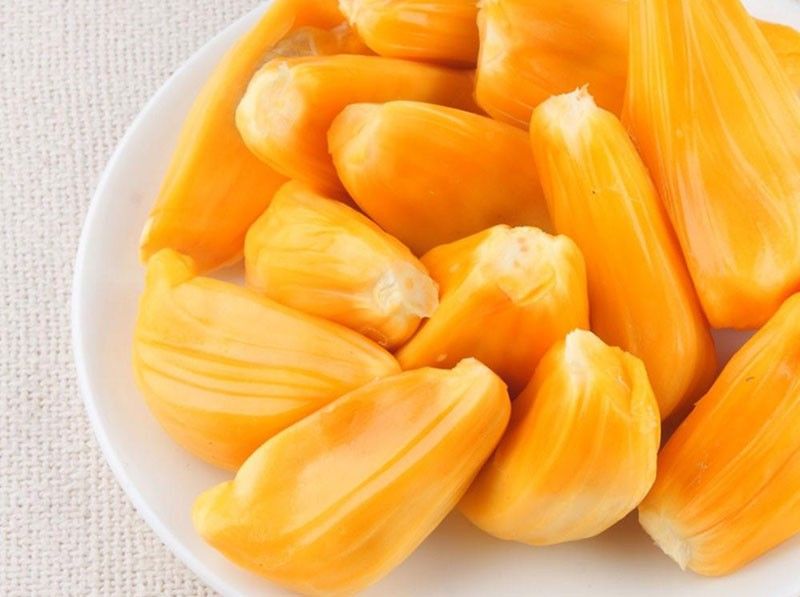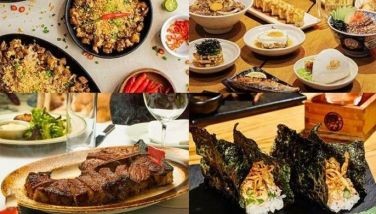The Versatile Jackfruit

CEBU, Philippines — In this country, the jackfruit – or “langka” – is not a very popular fruit. Not as popular as mango and banana, at least. And yet, langka reigns as the largest tree-borne fruit; one fruit can weigh up to 55 kilos.
The ripe fruit emits an aroma that is difficult to miss. In fact, when the ‘smell’ is detected in the backyard the fruit a jackfruit is to be taken down from the tree, and allowed to fully ripen in the kitchen, or else it will soon just fall off by itself. The meat of the ripe fruit is sweet and juicy – even somewhat crunchy when eaten chilled.
In the rural areas, it is quite a family event to cut open a ripe langka. Everyone would gather around the open fruit and start separating the meat from the pulp and seed. Then the fresh meat is enjoyed over cheerful conversation.
The langka flesh is starchy and fibrous and is a good source of dietary fiber. Many people are only familiar with langka eaten fresh when ripe. Actually, the fruit is quite versatile and has many other food uses.
It is widely used as flavoring for many desserts, hot or cold. A hint of langka makes haluhalo or ice candy or biko or puto kutsinta or turon or binignit more deliciously inviting. Still, making langka as flavoring is not the only other use of the fruit.
The langka fruit can be used either ripe or unripe. Its seeds can be cooked by boiling, baking, or roasting. Some people compare the milky sweet taste of cooked langka seeds to Brazil nuts. In certain areas of the country, sweetened ripe langka combined with cassava starch is commonly served as a special delicacy during fiestas.
Unripe, the fruit is still very useful in the kitchen. The white pulp of unripe langka is usually cooked as a vegetable in coconut milk. It can be shredded, seasoned, cooked, and served as an alternative to meat.
Without its sweet aroma yet, the texture of the unripe langka pulp is similar to pulled pork – not really meaty but not fruity either. Young langka can also be cooked with meat, shrimp or smoked pork. One popular way to enjoy it is to make it into a tropical salad made of boiled unripe jackfruit with tomato and coconut cream – “Langka Ensalada” or “Kinilaw Nga Nangka” in Cebuano.
Here’s a “Langka Ensalada” recipe from www.panlasangpinoyrecipes.com that’s so simple to try at home:
Langka Ensalada
Ingredients:
½ kg unripe Langka, sliced into bite sizes
1 pc small Onion, sliced
5 pcs medium size Tomatoes, sliced
1 pc thumb-size ginger, sliced into strips
7 tbsp Calamansi juice, pure
2 tbsp Sugar
2 cups Coconut Cream (first squeeze ‘gata’)
1 pc native Chilli, sliced
1 pc Spring Onion, chopped (for garnish)
Water (for boiling)
Procedure:
1. Boil the langka in water with salt until cooked.
2. Drain and combine with onion tomatoes and ginger. Allow to chill.
3. When sufficiently chilled, place in a bowl and combine with rest of the ingredients.
4. Toss garnish with spring onions and serve.
- Latest































